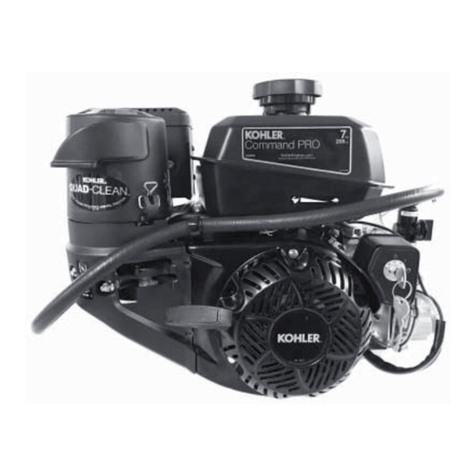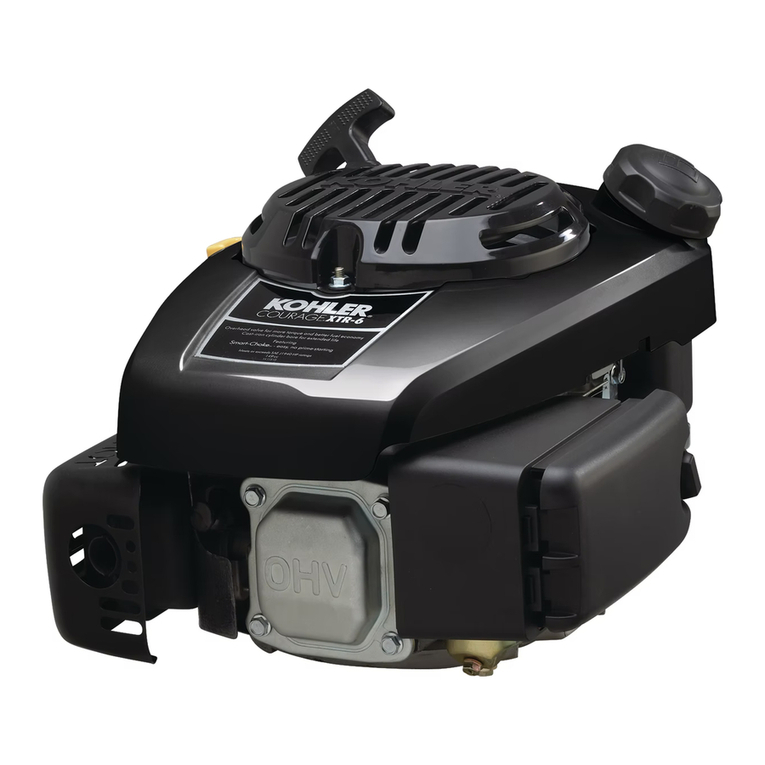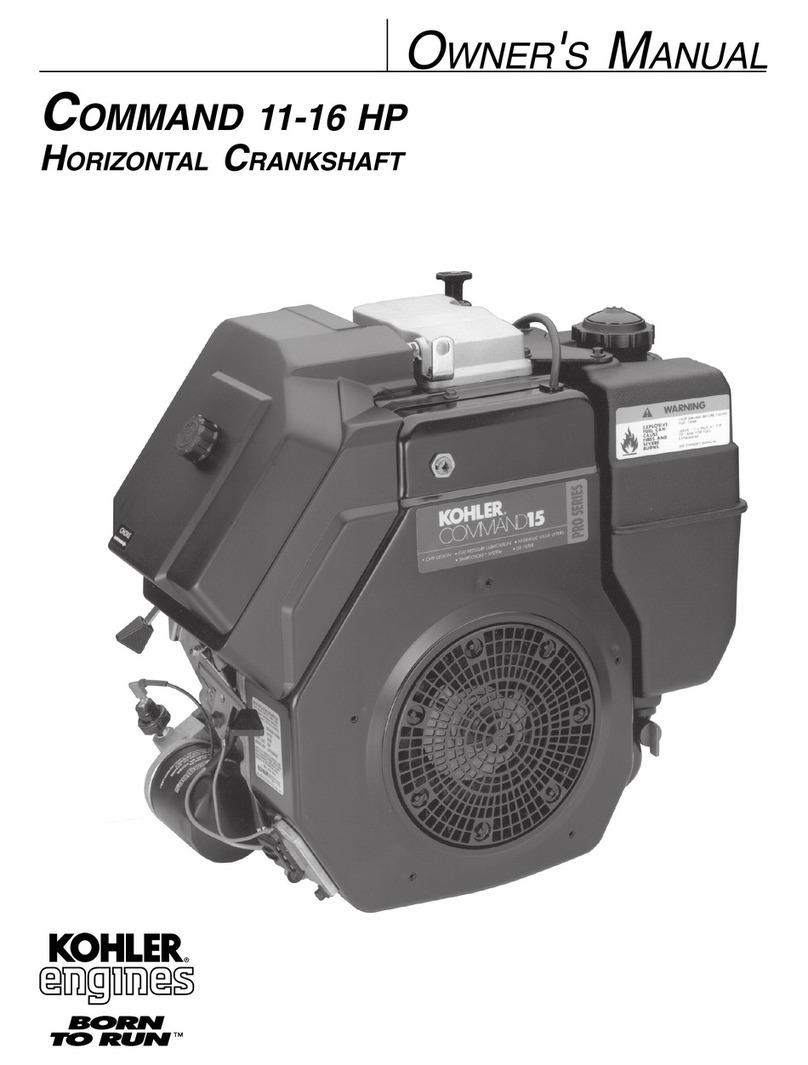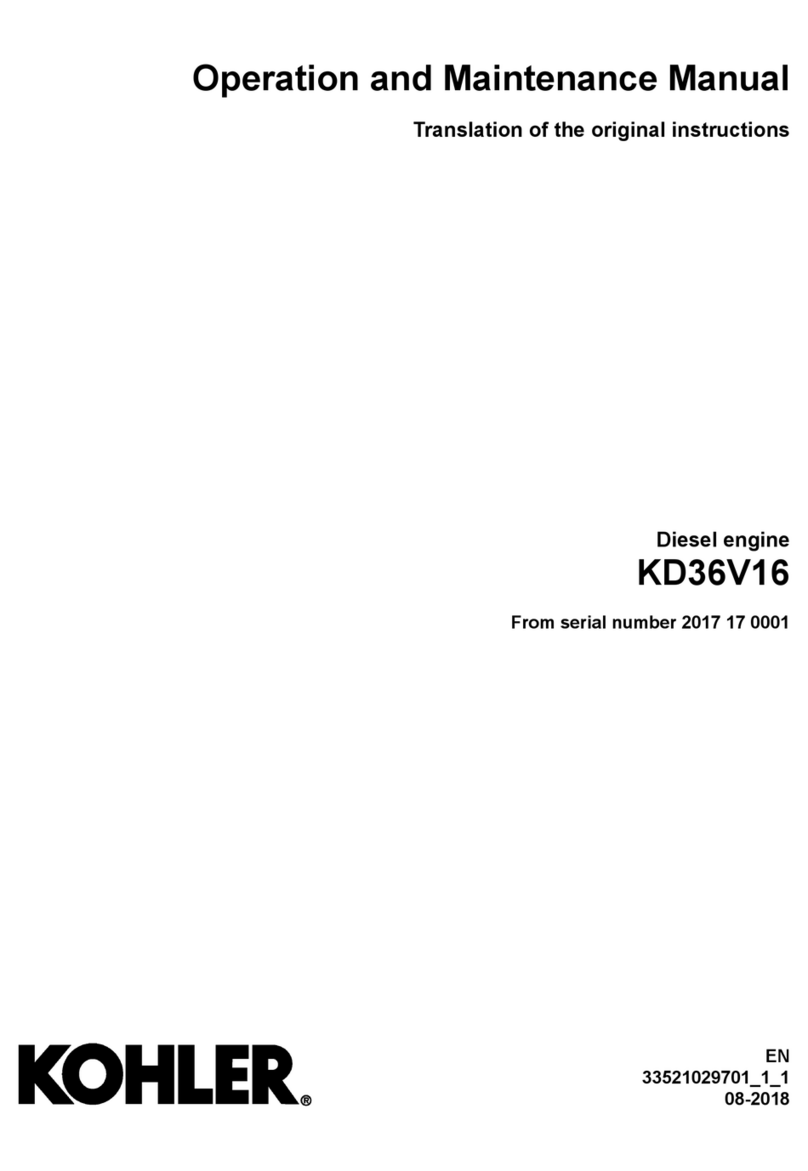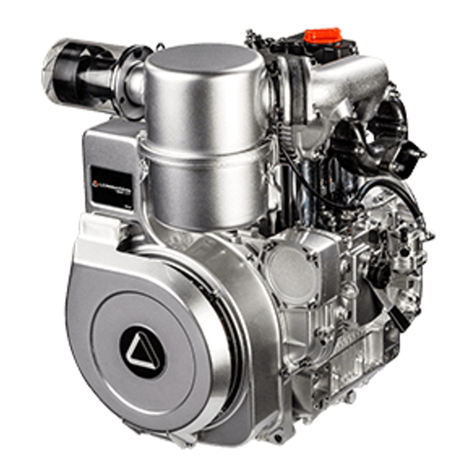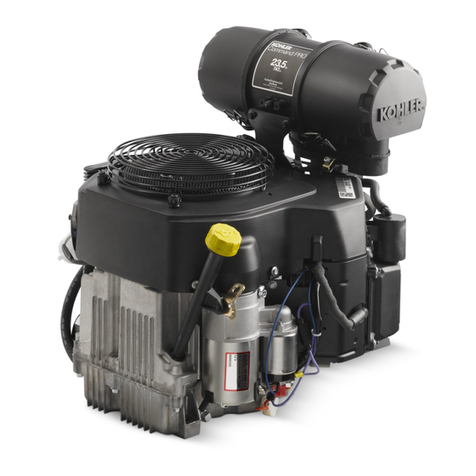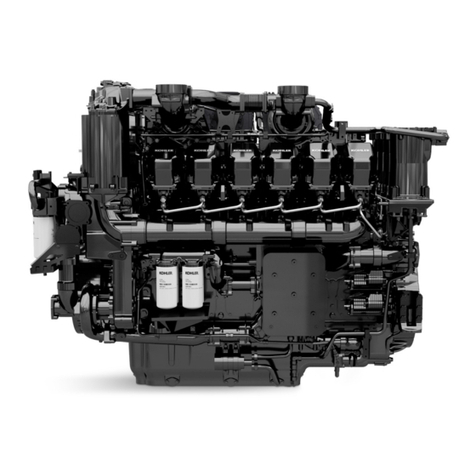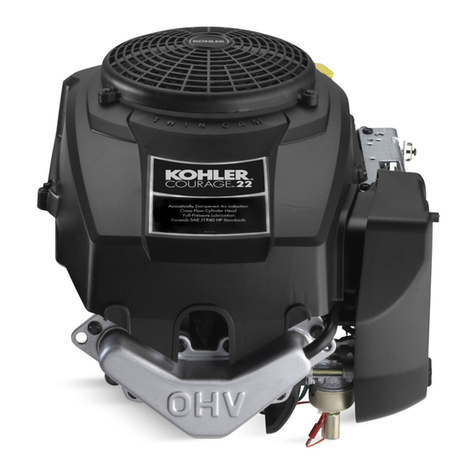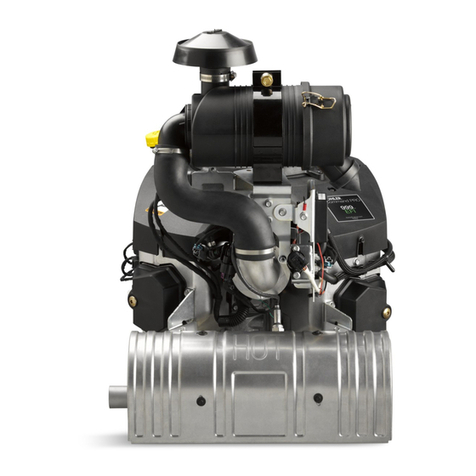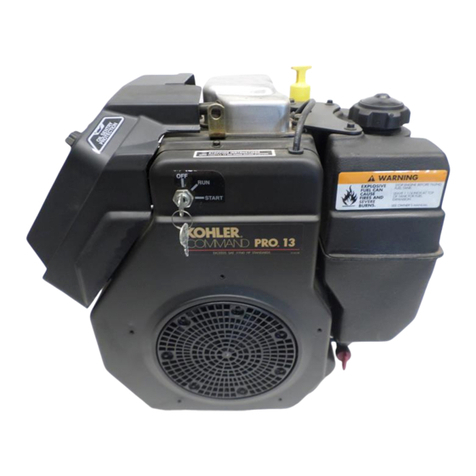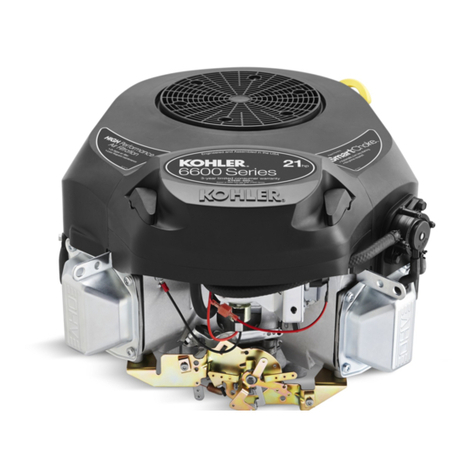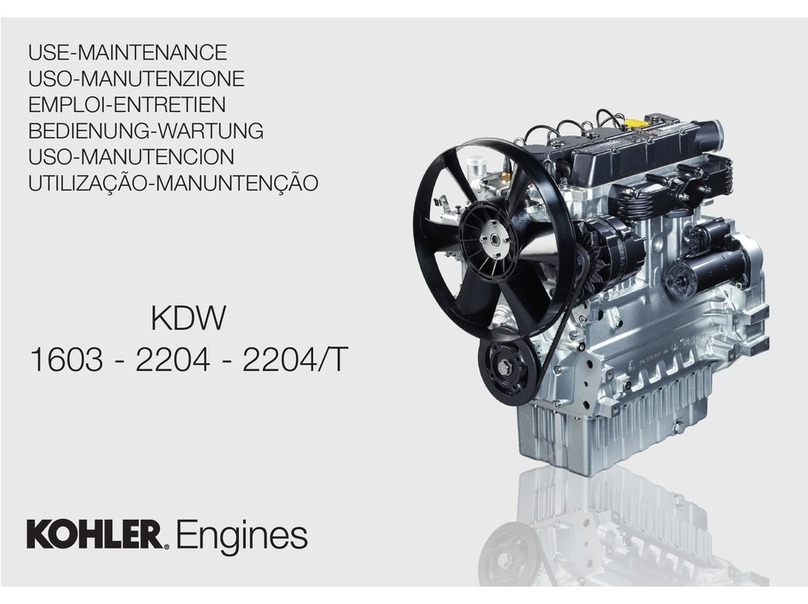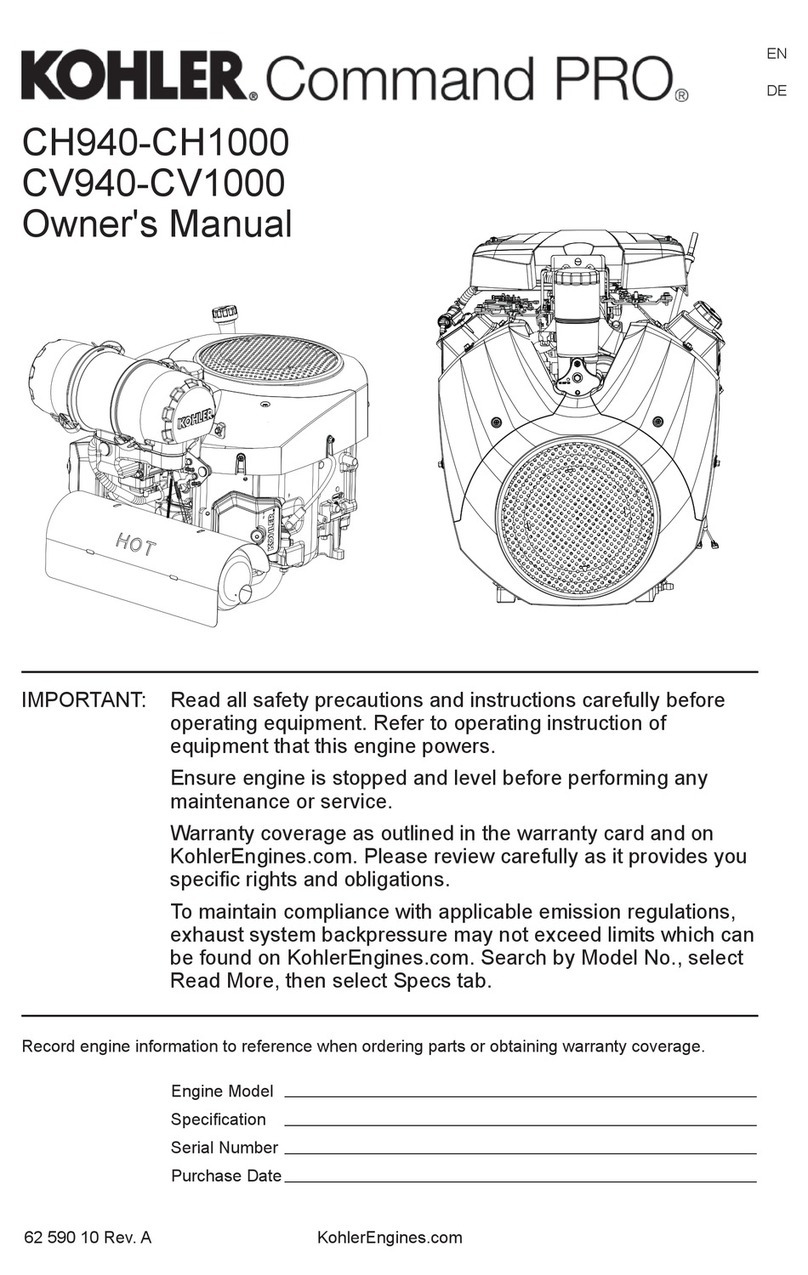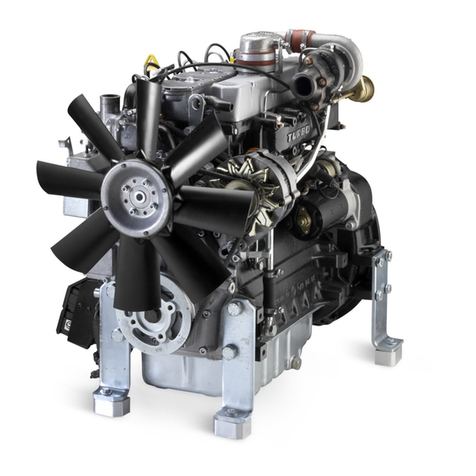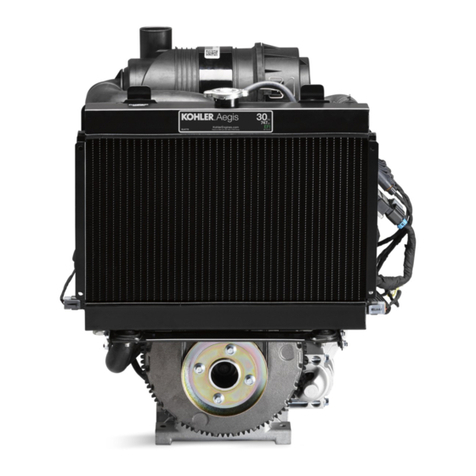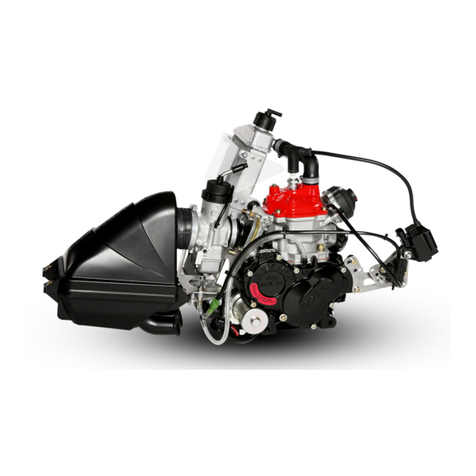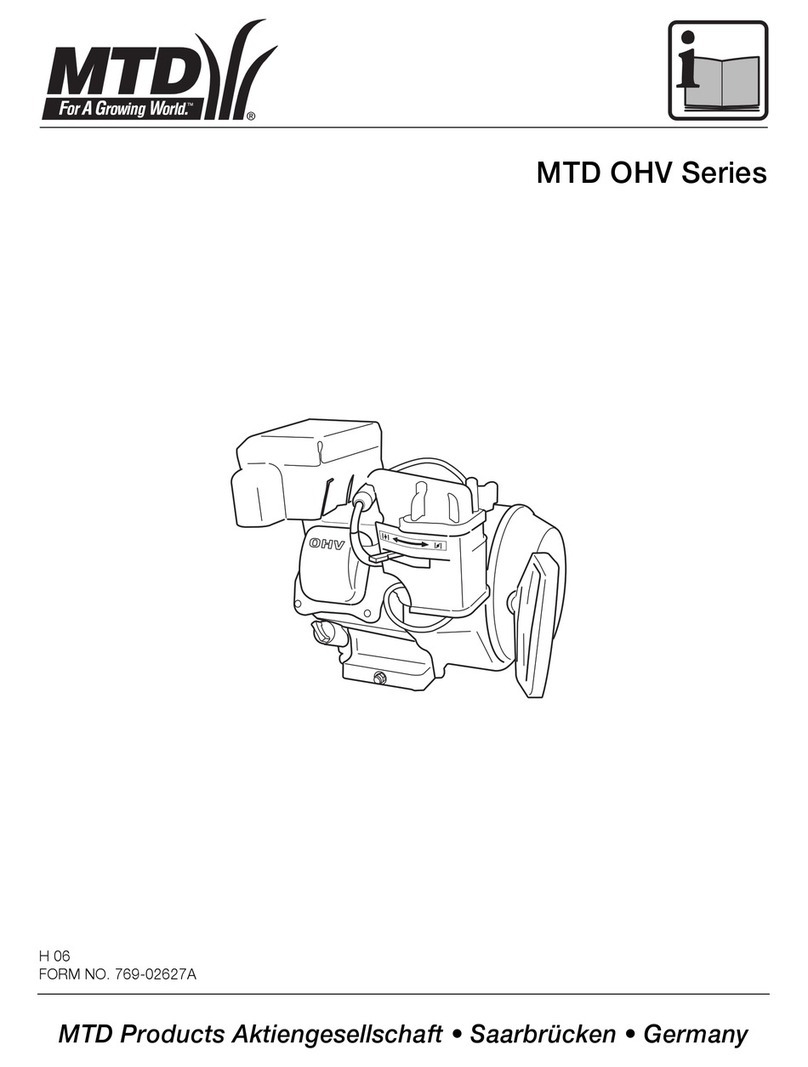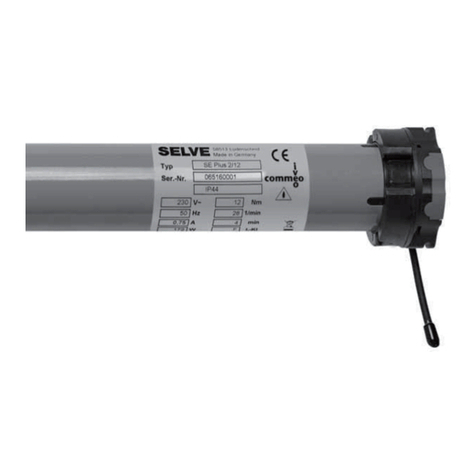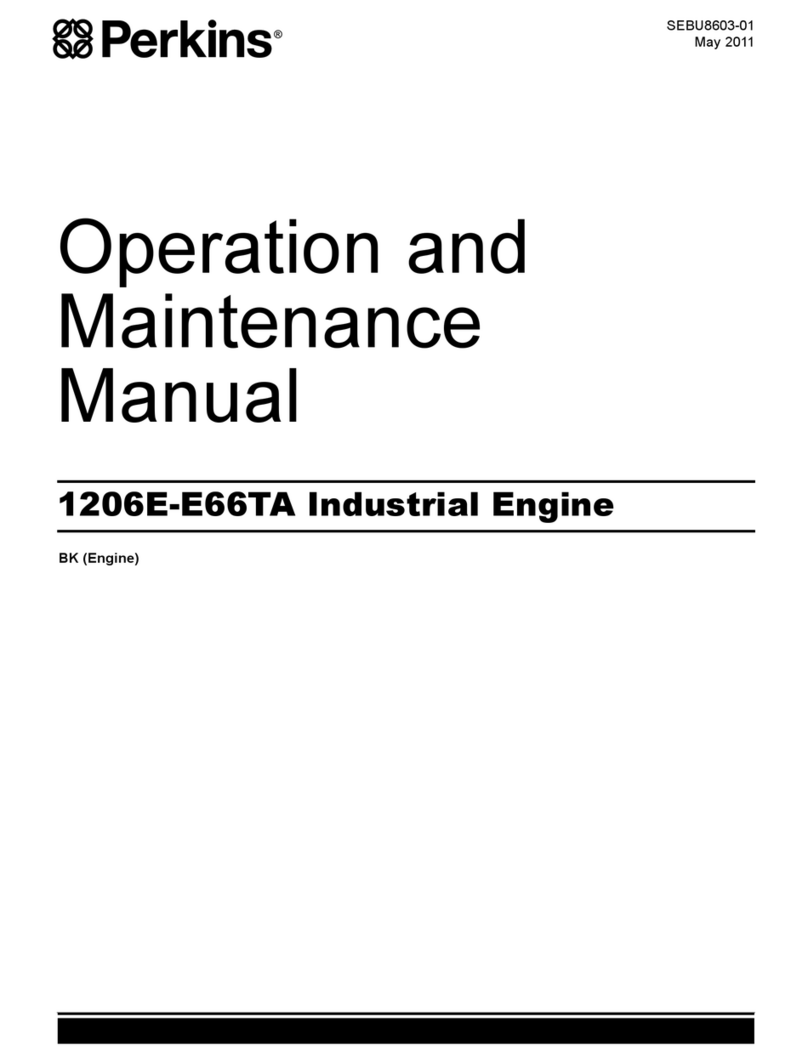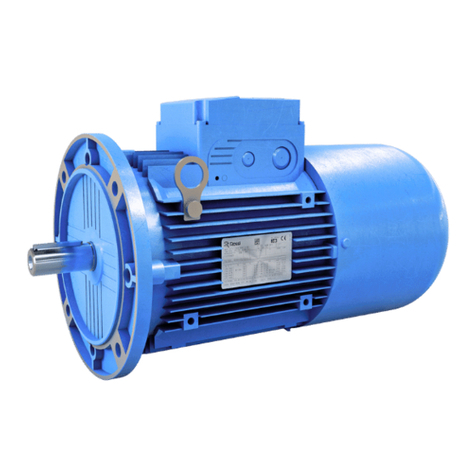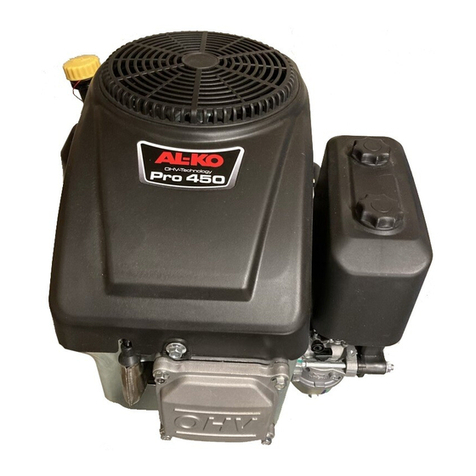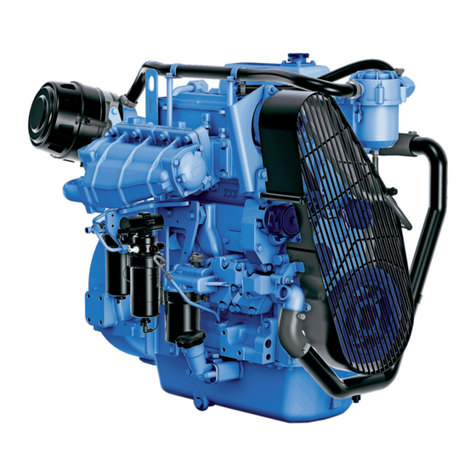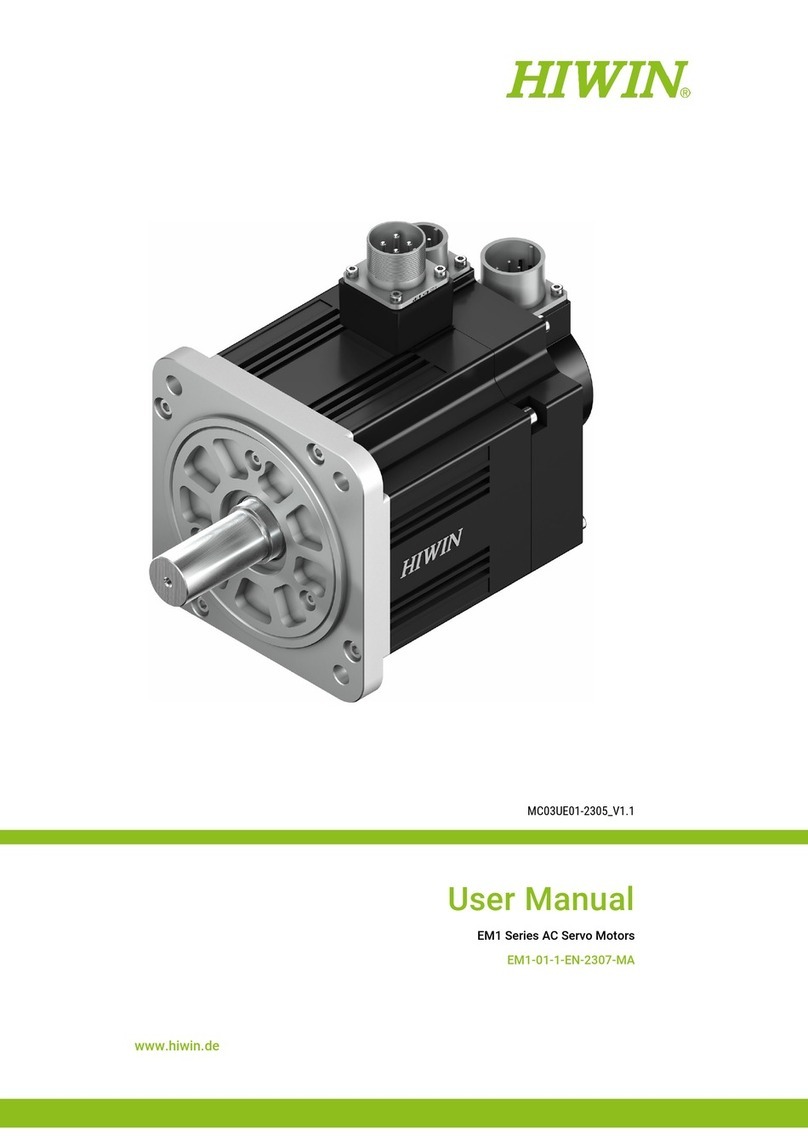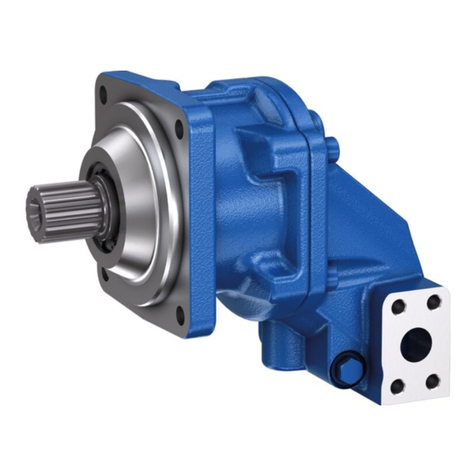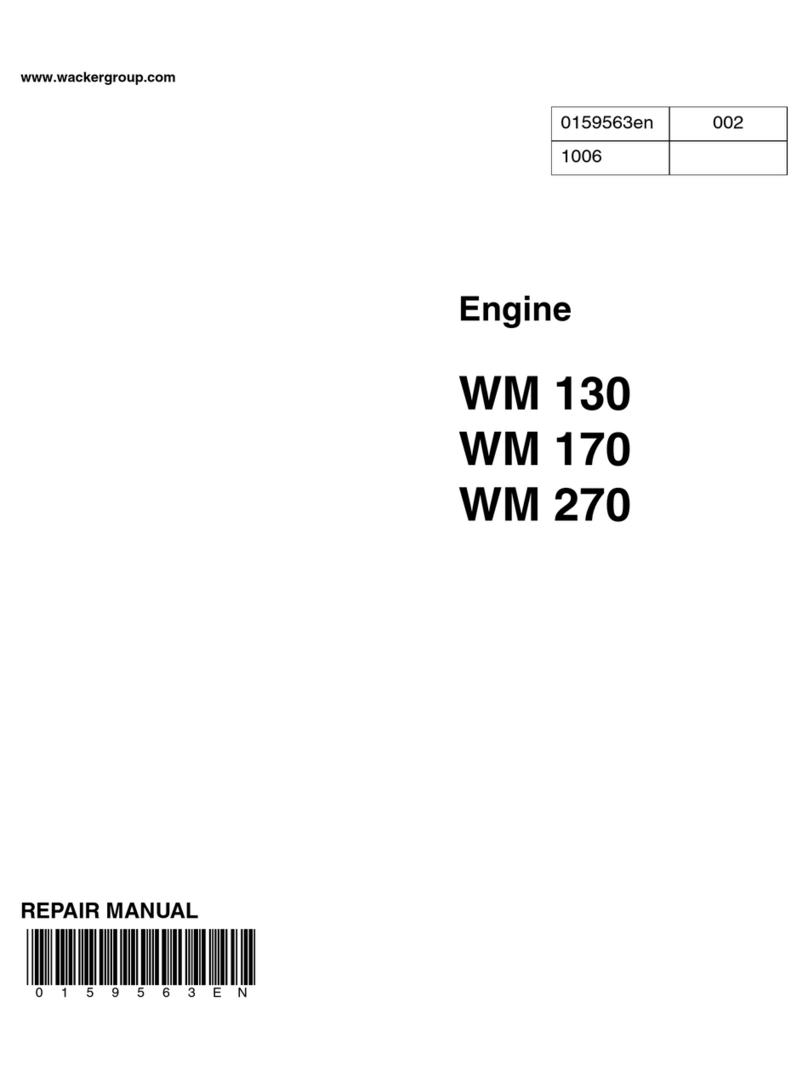
9
Change the oil as follows (see Figures 7 and 8):
1. To keep dirt, debris, etc., out of the engine, clean
the area around the oil fill cap/dipstick before
removing it.
2. Remove the oil drain plug and oil fill/check plug.
Be sure to allow ample time for complete drainage.
3. Reinstall the drain plug. Make sure it is tightened to
17.6 N·m (13 ft. lb.) torque.
4. Fill the crankcase, with new oil, of the proper type,
up to the point of overflowing the filler neck. Refer
to Oil Type on page 4. Always check the level
before adding more oil.
5. Reinstall the oil fill/check plug and tighten securely.
NOTE: To prevent extensive engine wear or
damage, always maintain the proper oil
level in the crankcase. Never operate the
engine with the oil level below the point of
overflowing the filler neck.
Service Precleaner and ir Cleaner Element
This engine is equipped with a replaceable, high density
paper air cleaner element. All engines are also
equipped with an oiled, foam precleaner which covers
the paper element. See Figure 9.
Check the air cleaner daily or before startin the
en ine. Check for a buildup of dirt and debris around
the air cleaner system. Keep this area clean. Also
check for loose or damaged components. Replace all
bent or damaged air cleaner components.
NOTE: Operating the engine with loose or damaged
air cleaner components could allow unfiltered
air into the engine causing premature wear
and failure.
Service Precleaner
Wash and reoil the precleaner every 25 hours of
operation (more often under extremely dusty or dirty
conditions).
1. Loosen air cleaner cover retaining knob and
remove the cover.
2. Remove the precleaner from the paper element.
3. Wash the precleaner in warm water with detergent.
Rinse the precleaner thoroughly until all traces of
detergent are eliminated. Squee e out excess
water (do not wring). Allow the precleaner to air dry.
Fi ure 8. Cutaway Showin Proper Oil Level.
5. If the level is low, add oil of the proper type, up to
the point of overflowing the filler neck. (Refer to
Oil Type on page 4.) Always check the level
before adding more oil.
NOTE: To prevent extensive engine wear or
damage, always maintain the proper oil
level in the crankcase. Never operate the
engine with the oil level below the point of
overflowing the filler neck.
Oil Sentry
Some engines are equipped with an optional Oil
Sentry oil level switch. If the oil level decreases
below an acceptable level, the Oil Sentry will either
shut off the engine or activate a warning signal,
depending on the application.
NOTE: Make sure the oil level is checked BEFORE
EACH USE and is maintained up to the point
of overflowing the filler neck. This includes
engines equipped with Oil Sentry.
Change Oil
For a new en ine, change oil after the first 20 hours
of operation. Thereafter, change oil after every 100
hours of operation.
For an overhauled en ine, use 10W-30 service class
SG, SH, SJ or higher oil for the first 5 hours of
operation. Change the oil after this initial run-in period.
Refill with service class SG, SH, SJ or higher oil as
specified in the Viscosity Grades table (Figure 2) on
page 4.
Change the oil while the engine is still warm. The oil
will flow freely and carry away more impurities. Make
sure the engine is level when filling, checking, or
changing the oil.
Filler Neck
Brin Level Up
To Point Of
Overflow
